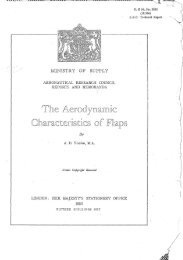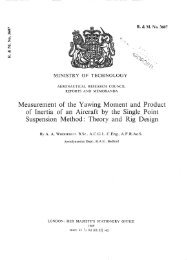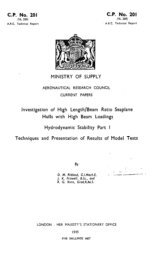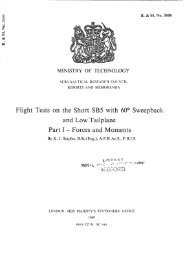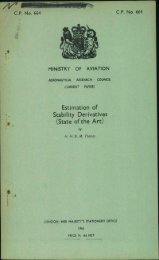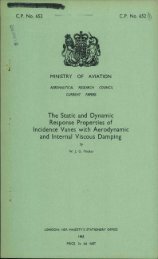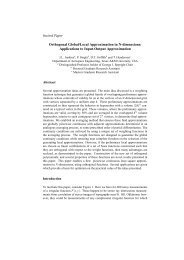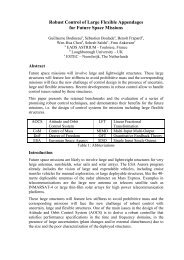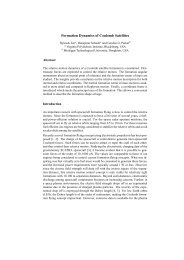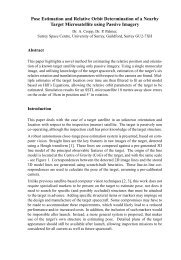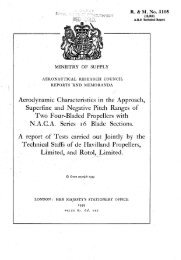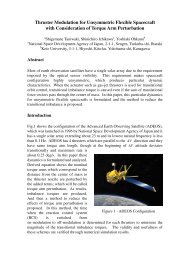A Survey of Unsteady Hypersonic Flow Problems
A Survey of Unsteady Hypersonic Flow Problems
A Survey of Unsteady Hypersonic Flow Problems
You also want an ePaper? Increase the reach of your titles
YUMPU automatically turns print PDFs into web optimized ePapers that Google loves.
t<br />
- 28 -<br />
and r “” + u’ i + (1+K#)r ;+ v'~l+~Y) z + r\]+ (1+rgy) i’ = o(q’2),<br />
ax<br />
where u, + u' is velocity ccmponent in x-direction (see Fig. 7)<br />
vo + v' is velocity component in y-direction<br />
w' is velocity ccmpcnent in +djrecticn<br />
is the steady flew density<br />
. . . (2.53)<br />
L<br />
is the body surface curvature in the meridianal (x,y)-plane<br />
9' is u', v', or w', whichever is the greater.<br />
The terms in equations (2.50) - (2.53) are next subjected to an order<br />
<strong>of</strong> magnitude analysis starting from the assumptmn that for hypersonic flow<br />
PO<br />
EC = - >> 1<br />
and using the results <strong>of</strong> steady flow analyses to conclude that<br />
PC.2<br />
uo<br />
PO<br />
- = O(i), - = O(l),<br />
U PO lJa<br />
vo A<br />
- e O($), and - = O(Gi 1,<br />
U a,<br />
. . . (2.54)<br />
where A is the shock stand-cffdistance and & is the nose radius <strong>of</strong> curvature.<br />
It is also established that if<br />
u' V’ P' W’<br />
-z O(K)



